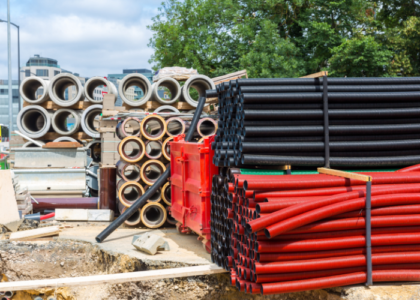A recent poll found that more Americans do or intend to fly the flag this year than in the past few years. If you’re one of them, you’re probably wondering if there are any rules regarding flying the American flag outside of your home.
A big question many people have concerns the height of a flagpole for a house. How big should it be? Is there a minimum or maximum height that you need to observe?
Flag code can seem a little bit complicated if you’re new to it. The good news is that a lot of the more nitty-gritty details don’t apply to residential flag fliers and instead apply to government properties.
To help you get started, let’s take a closer look at the proper flagpole height for your home.
Is There a Legal Flagpole Height For a House?
There is no flagpole height for a house that is designated by US law. That means that you don’t have to worry about getting into any legal trouble for flying your flag too low or too high. There are some rules that you should observe as a civilian when flying the American flag, however.
For example, the flag should never be flown in darkness. If you want to leave your flag up overnight, you will need to make sure that it is illuminated by a light. When using a vertical flagpole, this means that you will need to install a light at the base the illuminates the flag above.
If your flag becomes damaged, it is important that you dispose of it properly. The easiest way for civilians to do this is to bring their tattered or ripped flag to their local American Legion.
Finally, it is crucial that your flagpole is tall enough that your flag won’t touch anything beneath it. This includes the ground but it also includes trees and plants.
What Considerations Should You Make When Choosing a Flagpole For a House?
Although there is no official rule regarding the height of a flagpole for a house, there are still some things you will want to consider. We’ll take a look at the most common considerations homeowners should make when picking their flagpole size.
Any Existing Flagpoles in Your Yard
Do you fly any other flags in your yard? Whether those flags represent your state or sports teams or specific organizations, there’s one key rule to observe. The American flag should always fly higher than other flags in your yard.
The exception? If you’re flying the flag of another nation, the American flag may fly at the same height.
The Size of Your American Flag
If you already have an American flag at home, you will want to make sure that your flagpole is able to accommodate it. Most American flags purchased by homeowners are 3 feet by 5 feet. If this is the size of your flag, a 15-20 foot flagpole will work well.
If, on the other hand, you opt for a 4 foot by 6 foot American flag, you may want to consider a taller flagpole. Anything between 20 and 25 feet will do.
Typically, homeowners do not have flags larger than 4 feet by 6 feet.
Applicable HOA Rules and Regulations
It is possible that you are obligated to follow certain rules and regulations–just not ones that are dictated by US law.
If your home is under the jurisdiction of a Homeowners Association, you will want to check with them about flagpole heights. Not all HOAs are concerned with flagpoles, but many are. They often pose limits on how tall a flagpole can be and where you can locate it in your yard.
Oftentimes, a 15-foot flagpole is acceptable under the rules and regulations of HOAs. However, you will still want to double-check to avoid any neighborhood issues or HOA fines.
Your Local Weather Patterns
Do you live near a large body of water or a sprawling mountain range? Is your home located down in a valley that sees unusual weather patterns throughout the year? Ultimately, it is important that your flagpole can stand the test of your local weather.
The biggest culprit that can break or damage a tall flagpole is wind. We often recommend that people who live in areas that see severe winds throughout the year consider a flagpole that is 20 feet tall or less. When you install a tall flagpole in a windy area, you increase the odds of it bending or breaking.
The Type of Flagpole You’re Buying
When you’re shopping for a flagpole, you’ll discover that there are a few different materials that are commonly used to construct them. Steel, aluminum, and PVC are some of the most common.
Steel is considered the strongest flagpole material. However, it can show signs of wear in the form of rust at a quicker rate. It is also on the more expensive side.
PVC is a lightweight and inexpensive option for flagpoles but it also shows less endurance.
When choosing a home flagpole, we recommend looking for aluminum. Collapsible flag poles made of aluminum are perfect for any home and can endure quite a bit of wind. Plus, they are easy to lower when storm systems head your way.
Find the Right Home Flagpole For You
If you’re one of the many American homeowners who are considering flying the American flag, you may have questions about how to do so. The good news is that when it comes to the height of a flagpole for a house, the choice is (typically) yours to make. As long as your flagpole meets the needs we’ve discussed here, you’ll be in good shape.
Looking for more helpful guides that will make your shopping and home planning easier? Take a look around for the content you need to make informed decisions.






